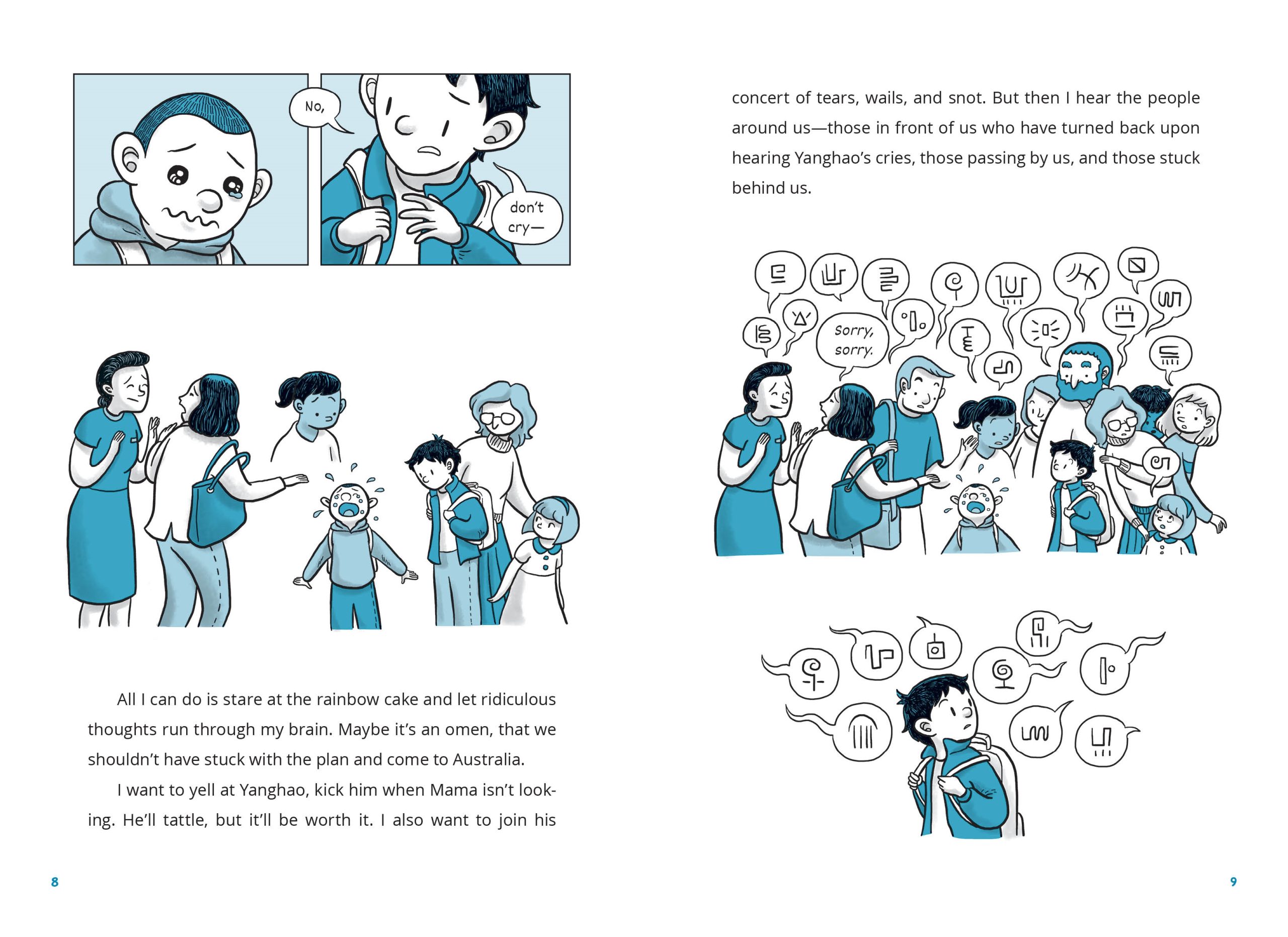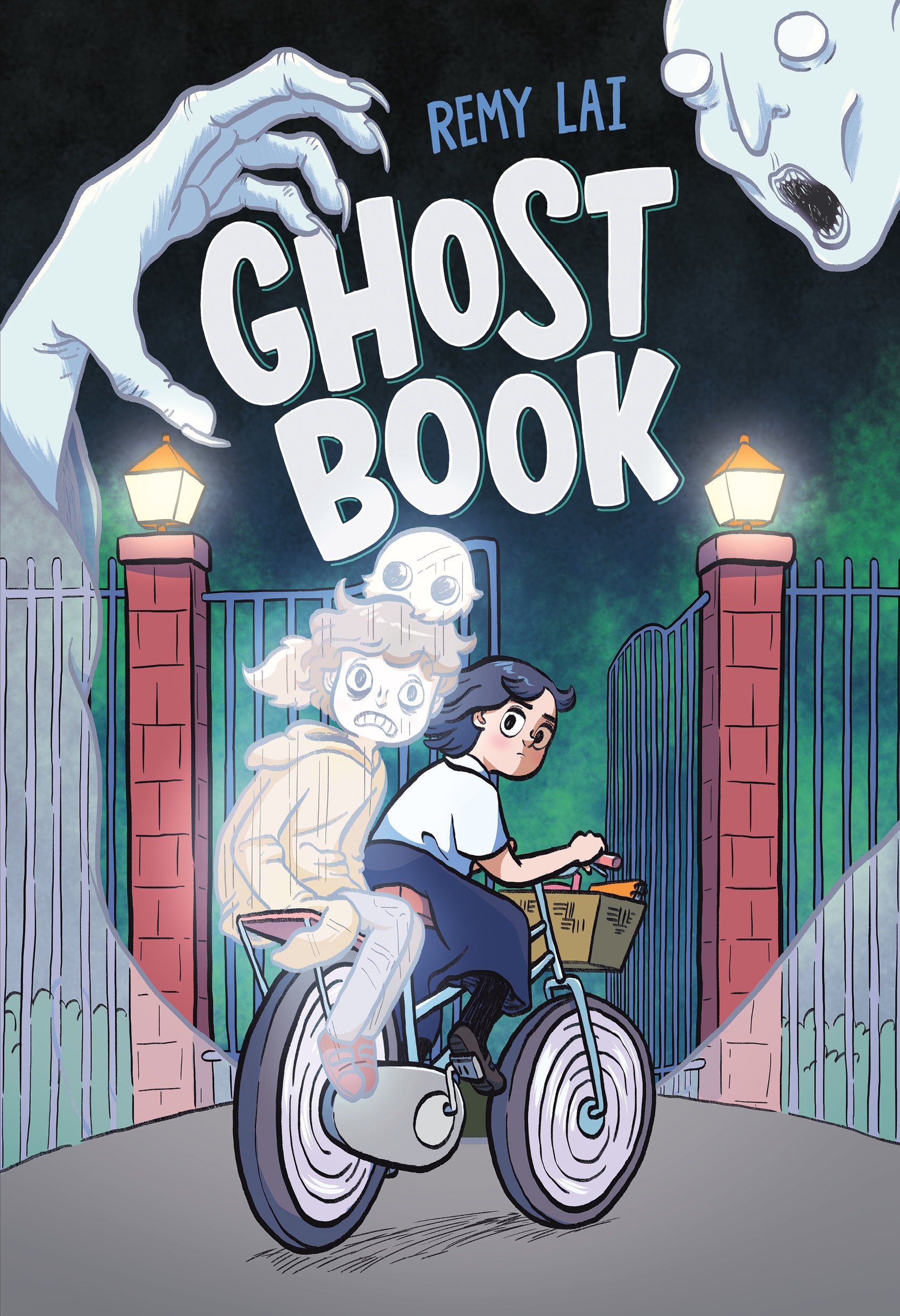Australia-based Remy Lai has written and drawn seven graphic novels and 'hybrid' comics/prose books for children. Her 2019 debut, Pie in the Sky, which combined baking and dealing with loss with immigration and learning new languages, won a host of awards from Kirkus, NPR and others. Begun in 2022, her Surviving the Wild nonfiction series combines her love of comics with an interest in conservation as it addresses the challenges that animals around the world are facing because of climate change - with stories told from the perspective of the animals. Lai’s newest middle grade graphic novel, Ghost Book, explores her childhood growing up in Singapore and follows in the footsteps of her previous work in focusing on the difficulties that can be part of family relationships, friendship, and how food can bring people together.
The interview was conducted via email, and has been edited for concision.
-Gina Gagliano
GINA GAGLIANO: You're centering your new book around Hungry Ghost >onth [August 16 to September 14 in 2023]. What was it like to write about this traditional Chinese celebration?
REMY LAI: Hungry Ghost Month is part and parcel of growing up in Singapore, and now that I haven’t lived there in years, it was nice traveling down memory lane and exploring all the superstitions that accompany this festival.
And I love writing and reading horror stories, so I had the best time.
And how did you play with the traditional mythology for the sake of the story?
Since I grew up in Asia with so many different interpretations of Hungry Ghosts and the underworld, I don’t know which is the “true” or “accurate” version, if there is one. I kept the general characteristics or roles of well-known figures or objects in these mythologies, and then I adapted them to serve the story. For example, the Register of Births and Deaths exists in some form in Chinese mythology, but I made up the other registers (Yin-yang Eyes Register, King of the Underworld’s Underlings Register).

There are so many ghosts in this book - weird-looking ones, cute-looking ones, and gross-looking ones! How did you design them all?
The Hungry Ghosts have to be immediately distinguishable from the regular ones. As the Hungry Ghosts are malevolent, to make them scary, I designed them to look more realistic. They’re instantly recognizable as people, but grotesquely skewed. From there, the regular ghosts are designed to contrast with the Hungry Ghosts.
Middle school is such an emotional time - and you're so good at getting those emotions about family and friendship on the page. How do you tackle capturing those emotions?
Being an introspective kid who often felt like an outsider helps, haha! I remember very well the complex feelings I had growing up. It also helps that I kept diaries at various points in my life.
What inspired you to move from contemporary fiction to contemporary fantasy?
I love reading and writing across different genres. It just happened that my debut middle grade novel happened to be contemporary fiction, so the subsequent books built off that. The idea of these two kids, one of them a ghost, trying to rescue each other, has been at the back of my mind for many years. It was only when I was finishing up work on my previous kids' graphic novel, Pawcasso (2021), that I finally figured what their story was.

You started out your career in hybrid books. I'm so curious about how that creative process works - how do you decide what's text, what's a comic, what's an illustration, and how it gets laid out on a page?
I wish I can give you a step by step how-to, but it’s a process that I do without thinking too much. It’s probably a skill I subconsciously picked up from reading a lot of comics and illustrated books (I read comics exclusively until third grade). It’s only during the revision processes that I analyze what I have drafted and realize the factors that played into all the subconscious decisions, from pacing to what I think is fun to draw, to what is better conveyed in pictures or words.
What was it like transitioning between a hybrid style to doing full graphic novels?
It feels natural, to be honest. Some stories just lend themselves to certain formats. But creating a graphic novel is a whole lot more daunting (emotionally and physically) because it involves months and months of drawing. Sooooo much drawing.

You frequently tell stories about kids whose parents are absent - from parents who have passed away, to parents who are busy with work, to kids who are heading off on a (secret) solo plane trip. What about this kids-sans-parents dynamic is interesting to you?
I need to get rid of the parents so the kids can be proactive in driving the story forward. And since I spent half of my childhood far away from my parents, kids being independent doesn’t seem odd to me.
Food is an important theme in your books - from pie to ice cream to dumplings. What is it about food that makes it interesting to write and draw about?
Food is tied to places, people, and memories. And it’s always fun to include the recipe at the end of the book, and to have readers baking or cooking along.
And what are some of your favorite foods? And do you have a favorite kind of dumplings?
My favorite food is coffee ice cream. My favorite kind of dumplings is har gaw (shrimp dumplings).

I love your nonfiction animal books! Can you talk about what inspired them?
I have always loved animal stories - fiction and non-fiction. Since animals are so tied to places, cultures and politics, they’re a gateway to many other issues in the world.
But the series started because a little pink, toaster-shaped elephant popped into my head. And he made me think about an old news article about a trio of elephants swimming from Malaysia to Singapore (a country that holds a special place in my heart), which ended up being fictionalized into my graphic novel Star the Elephant [the first Surviving the Wild book].
What was the process of working on a nonfiction book for kids like? What research did you do - and how did you write in a way that worked well for that younger age group?
Once I had the elephant story, I had to decide on what animals I wanted to write next, and they had to tackle different environmental issues. I had a good idea of the animals I wanted to write about, but I had to make sure there was enough information available. I did a lot of research, including reading up news reports and science articles, and watching documentaries and videos. I tried to rely on primary sources as much as I could. For example, I spoke with the director of a koala hospital for Rainbow the Koala [the second in the series], and I corresponded with the “Shark Professor” who rescued the shark that inspired Sunny the Shark [the third in the series].
Making sure that the books worked well for a younger group was a very interesting challenge. I had a plethora of cool information about animals I obtained during my down-the-rabbit-hole research, but I had limited pages. Ultimately I picked and chose information that served the story. And I worked very closely with my editor, Brian Geffen, to ensure that the dangerous moments the animals faced didn’t get too scary for the young readers. We were able to achieve that by carefully planning the words and images.
What are you reading now?
Graham Annable’s Eerie Tales from the School of Screams.
What are you working on next?
I just finished work on my 2024 illustrated diary-style horror novel, At Your Own Risk, as well as my 2025 contemporary graphic novel, Chickenpox. I’m now working on the script for my 2026 contemporary fantasy graphic novel, Me and My Pet Demon. These are all middle grade books.








